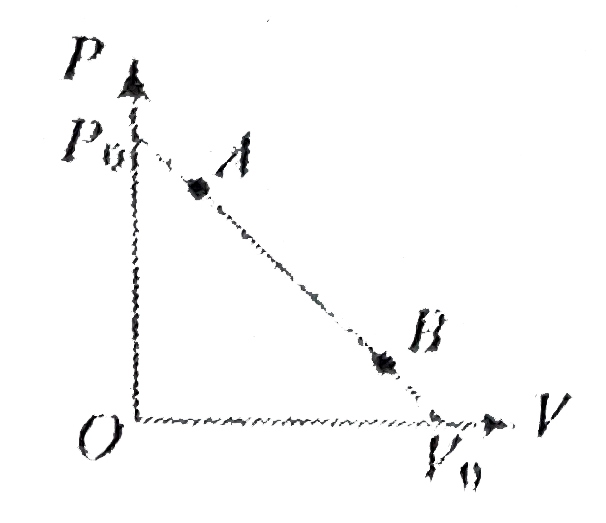A gas undergoes a process in which its pressure P and volume V are related as VP = constant. The bulk modulus of gas for this process
P/r
r2p
P
P1r
To find the bulk modulus of the gas for the process where pressure P and volume V are related as PV=constant, we can follow these steps:
Step 1: Understand the Definition of Bulk Modulus
The bulk modulus B of a substance is defined as the ratio of hydraulic stress to the volumetric strain. Mathematically, it can be expressed as:
B=−dPdV⋅V
Step 2: Differentiate the Given Relation
We are given that PV=K (where K is a constant). To find the relationship between pressure and volume, we differentiate both sides of the equation with respect to V:
ddV(PV)=ddV(K)
Since K is a constant, its derivative is zero:
ddV(PV)=0
Step 3: Apply the Product Rule
Using the product rule for differentiation on the left side, we have:
PdVdV+VdPdV=0
This simplifies to:
P+VdPdV=0
Step 4: Solve for dPdV
Rearranging the equation gives:
VdPdV=−P
Thus, we can express dPdV as:
dPdV=−PV
Step 5: Substitute into the Bulk Modulus Formula
Now, we substitute dPdV back into the bulk modulus formula:
B=−(−PV)⋅V
This simplifies to:
B=P
Conclusion
The bulk modulus of the gas for the process where PV=constant is equal to the pressure P.
Final Answer
B=P
The bulk modulus B of a substance is defined as the ratio of hydraulic stress to the volumetric strain. Mathematically, it can be expressed as:
B=−dPdV⋅V
We are given that PV=K (where K is a constant). To find the relationship between pressure and volume, we differentiate both sides of the equation with respect to V:
ddV(PV)=ddV(K)
Since K is a constant, its derivative is zero:
ddV(PV)=0
Using the product rule for differentiation on the left side, we have:
PdVdV+VdPdV=0
This simplifies to:
P+VdPdV=0
Rearranging the equation gives:
VdPdV=−P
Thus, we can express dPdV as:
dPdV=−PV
Now, we substitute dPdV back into the bulk modulus formula:
B=−(−PV)⋅V
This simplifies to:
B=P
The bulk modulus of the gas for the process where PV=constant is equal to the pressure P.
B=P
Topper's Solved these Questions
Similar Questions
A gas undergoes a process in which its pressure P and volume V are related as VPn= constant. The bulk modulus of the gas in the process is:
View SolutionA monoatomic gas undergoes a process in which the pressure (P) and the volume (V) of the gas are related as PV−3=constant. What will be the molar heat capacity of gas for this process?
View SolutionA fixed mass of an ideal gas is compressed in such a manner that its pressure and volume can be related as P3V3 = constant. During this process, temperature of the gas is.
View SolutionWhen a polyatomic gas undergoes an adiabatic process, its tempertaure and volume are related by the equation TVn= constant, the value of nwill be
View SolutionAn ideal gas is taken through a process in which pressure and volume vary as P=kV2. Show that the molar heat capacity of the gas for the process is given by C=Cv+R3.
View SolutionWhen a polyatomic gas undergoes an adiabatic process, its temperature and volume are related by the equation TVn =constant, the value of n will be
View SolutionOne mole of an ideal monatomic gas undergoes a linear process from A to B , in which is pressure P and its volume V change as shown in figure .

The absolute temperature T versus volume V for the given process is
View SolutionOne mole of an ideal monatomic gas undergoes a linear process from A to B , in which is pressure P and its volume V change as shown in figure .

The absolute temperature T versus volume V for the given process is
View SolutionAn ideal gas (γ=1.5) undergoes a thermodynamic process in which the temperature and pressure of the gas are related as T−1P2= constant. The molar heat capacity of the gas during the process is
View SolutionAn ideal gas with adiabatic exponent γ=43 undergoes a process in which internal energy is related to volume as U=V2 . Then molar heat capacity of the gas for the process is :
View Solution
